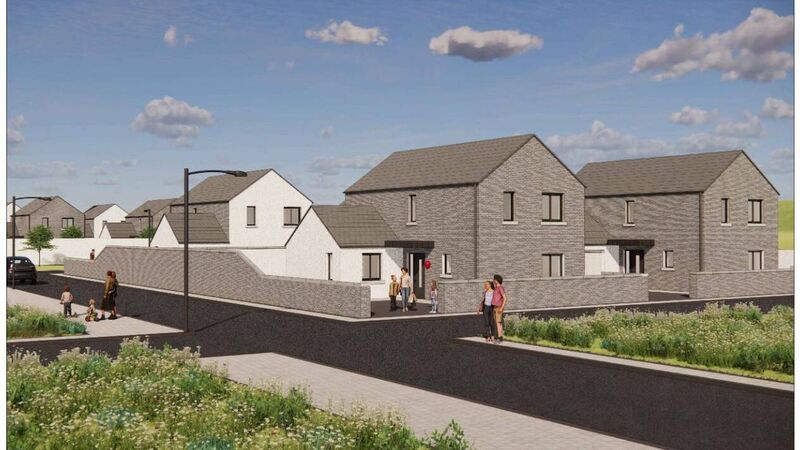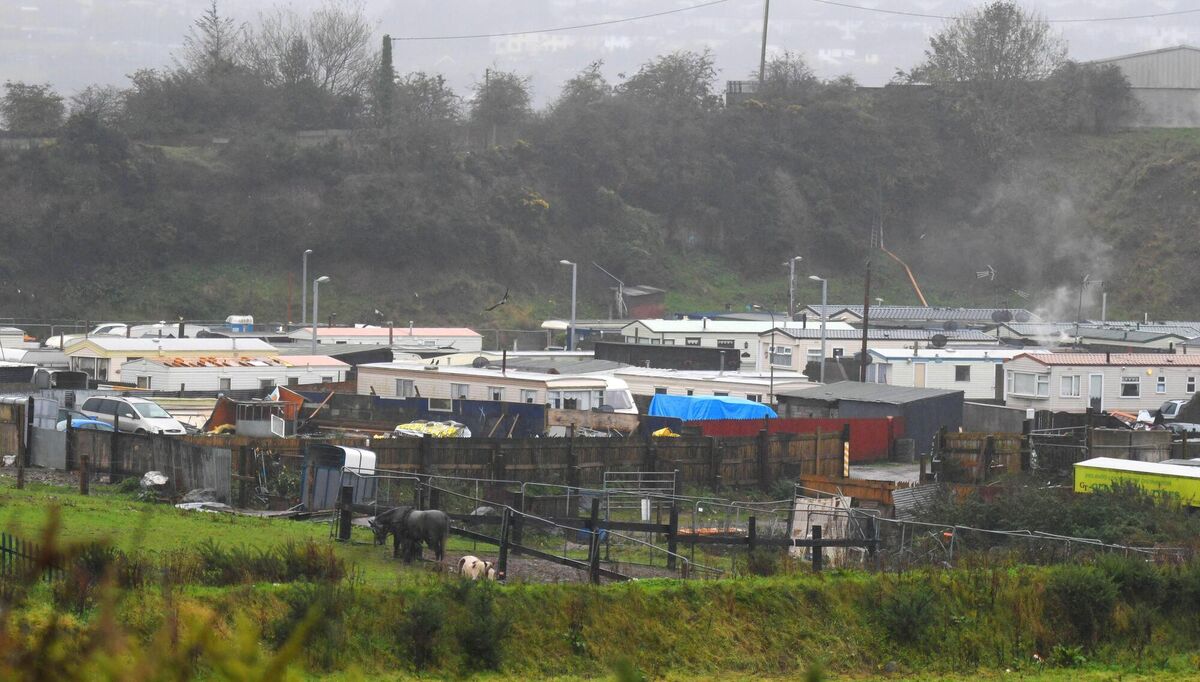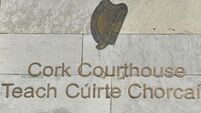Increase in Traveller families in Cork will mean substantial rise in housing need over next five years

Artist's impressions of the proposed €18m housing regeneration plan for the Spring Lane Traveller halting site in Cork.
Almost 200 Traveller families in Cork City will have a housing need over the next five years.
This is one of the key findings in the city council's new Traveller Accommodation Programme (Tap) which was adopted by city councillors this week — the first since the publication in 2021 of a damning Ombudsman for Children report into shocking conditions at the Spring Lane halting site.
It is estimated 110 Traveller families have an existing accommodation need but there will be between 70 and 86 new Traveller families in the city by 2029.
When existing and projected household needs are combined, the city will have to deliver 171 new homes for this cohort over the lifetime of the plan.
The Tap calls for greater involvement of the approved housing body sector in delivering the required accommodation, it calls for smaller Traveller housing schemes of fewer than six units, and it says the houses should have a side entrance and drive to cater for a tourer, with a garden area.
Since the Ombudsman's report, the city council has prepared a near €18m housing regeneration plan for the halting site and the adjoining Ellis’s Yard, and the city has also produced a Traveller Equality Action Plan in reply to a request from the Irish Human Rights and Equality Commission.
Green Party councillor Oliver Moran, chair of the council’s Local Traveller Accommodation Consultative Committee, praised the TAP and said delivering the Spring Lane project would be vital.
“In the last council term, we agreed a significant plan for Spring Lane and Ellis’ Yard," he said.
“That involved significant political will as well as support from the wider community. Now that has to move from a 'plan' to being a 'programme' of delivery.”

Delivering it will not be without challenge, he warned.
“Spring Lane is a live site and developing on any live site is difficult,” he said.
“That's the new challenge we find ourselves facing and that we must overcome to deliver for this programme.”
He also said the council must deliver accommodation at other locations, including for residents on Nash's Boreen, that a new site has to be identified for the residents living on the Carrigrohane Straight Road, and tackle related issues like proposals for a horse project and issues around animal welfare.
Research for TAP found that in 2022, there were 1,442 Travellers living in 381 private households in the city, with an average 3.8 people living in each home, with almost three quarters (74%) living in council supported or assisted accommodation.
They are mostly living in standard permanent housing, and not on transient sites.
A survey of more than 100 of the city's Traveller families showed 67% considered their current accommodation was not suitable for their current needs, with a third expressing a desire to live in one of the city’s urban towns such as Blarney and Ballincollig as their first preference.
Most respondents had a strong preference for local authority housing (52%) and group housing schemes (44%), with only 4% open to moving into a halting site, which is reflective of a broader trend of more Travellers choosing permanent housing over halting sites or temporary accommodation.












